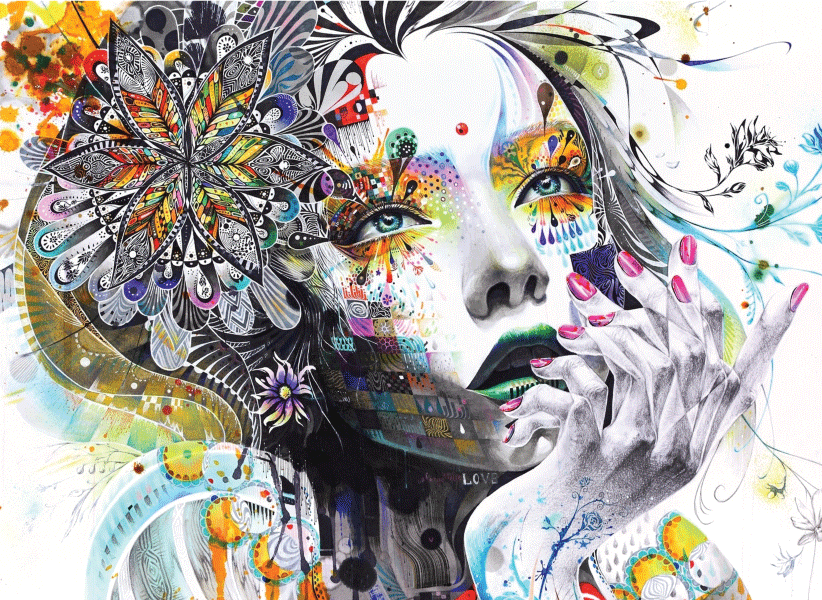Introduction:
Welcome to the exciting world of digital art in gaming! In this beginner’s guide, we’ll explore the fascinating intersection of art and technology and how it plays a crucial role in today’s immersive gaming experiences. Whether you’re a gaming enthusiast or an aspiring artist, this comprehensive guide will help you understand the basics of digital art in gaming and get started on your creative journey.
Understanding Digital Art in Gaming
Digital art in gaming refers to the creative process of using digital tools and software to design and produce visual assets, including characters, environments, objects, and special effects, that are used in video games. It combines traditional art techniques like sketching and painting with digital software, such as Photoshop, Illustrator, and 3D modelling programs.
The Significance of Digital Art in Gaming
Digital art in gaming plays a pivotal role in enhancing visual realism and creating immersive gaming experiences. With advancements in technology, game developers can now create highly detailed and lifelike environments, characters, and objects. Digital artists utilize their skills to craft textures, lighting effects, and intricate details that bring the virtual world to life.
Evoking Emotions and Setting the Tone
Digital art in gaming is not just about creating realistic visuals; it’s also about evoking emotions and setting the tone of the game. Through colour schemes, composition, and visual storytelling, digital artists can manipulate the mood and atmosphere, whether it’s a vibrant and joyful world or a dark and eerie setting. These artistic choices greatly contribute to the player’s emotional engagement and overall gaming experience.
Types of Digital Art in Gaming
Concept art is the initial stage of digital art in gaming, where artists visualize and conceptualize ideas for characters, environments, and other visual elements of the game. This art form helps establish the game’s visual direction and serves as a reference for the development team.
Character Design
Character design involves creating unique and visually appealing characters in the game world. Digital artists use creativity and technical skills to design characters with distinct personalities, appearances, and abilities. They consider factors such as the game’s genre, story, and gameplay mechanics to ensure the characters are visually appealing and functional within the game’s context.
Environmental Design
The environmental design focuses on creating captivating and immersive game worlds. Digital artists work on landscapes, architecture, and natural elements to construct visually stunning environments that players can explore. These environments are not just visually pleasing but also serve to enhance gameplay by providing interactive elements and strategic advantages.
Tools and Software for Digital Arts in Gaming
Digital drawing tablets, such as Wacom and Huion, are essential tools for digital artists. These tablets allow artists to draw directly on the surface with a stylus, providing a natural and intuitive drawing experience. They offer features like pressure sensitivity and customizable buttons, enabling artists to create intricate details and achieve greater control over their artwork.
2D Art Software
2D art software, such as Adobe Photoshop and Clip Studio Paint, is widely used by digital artists for creating concept art, character designs, and 2D textures. These software packages offer a wide range of brushes, layering options, and editing tools that empower artists to bring their ideas to life.
3D Modeling Software
For creating 3D assets, digital artists employ 3D modelling software like Autodesk Maya, Blender, and ZBrush. These tools allow artists to sculpt detailed 3D models, apply textures, and set up virtual lighting to achieve realistic and visually appealing results.
Creating Digital Art for Gaming
Before diving into creating digital art, it’s crucial to gather references. References can be images, photographs, or even real-world objects that inspire the artistic direction of the game. They provide a visual foundation and help artists understand the visual elements they need to create.
Sketching and Conceptualization
Sketching is an important step in the creative process. It allows artists to explore different ideas, compositions, and designs for characters, environments, and objects. Digital artists often start with rough sketches, gradually refining them to create a solid foundation for their digital artwork.
Digital Rendering and Painting
Once the sketches are finalized, artists move on to the digital rendering and painting phase. They create detailed digital artwork using their chosen software by adding colours, shading, highlights, and textures. This process involves utilizing various brushes and layering techniques to bring the artwork to life.
Iteration and Feedback
After completing the initial digital artwork, artists seek feedback from the game development team and make necessary iterations. Feedback plays a crucial role in refining the artwork and ensuring it aligns with the game’s overall vision.
Section 6: Tips for Aspiring Digital Artists in Gaming
Digital art in gaming is rooted in traditional art techniques. Aspiring artists must develop a strong foundation in drawing, composition, colour theory, and anatomy. These fundamental skills will greatly enhance their digital art abilities and create more creative freedom.
Digital art in gaming offers a vast array of possibilities. Aspiring artists should experiment with different art styles and techniques to find their unique voice and style. Trying out various brushes, textures, and effects can lead to exciting discoveries and innovative approaches to digital art.
Study and Analyze Existing Games
Studying and analyzing existing games can provide invaluable insights into the world of digital art in gaming. By examining the visual elements, character designs, and environmental details in popular games, aspiring artists can gain inspiration and learn from established professionals in the industry.
Conclusion:
Digital art in gaming is a captivating blend of artistic creativity and technological innovation. It brings virtual worlds to life, evokes emotions, and enhances the gaming experience. By understanding the different types of digital art, the tools and software used, and the creation process, aspiring artists can embark on their creative journey in game development. Remember to nurture your skills, experiment, and embrace the ever-evolving world of digital art in gaming.


